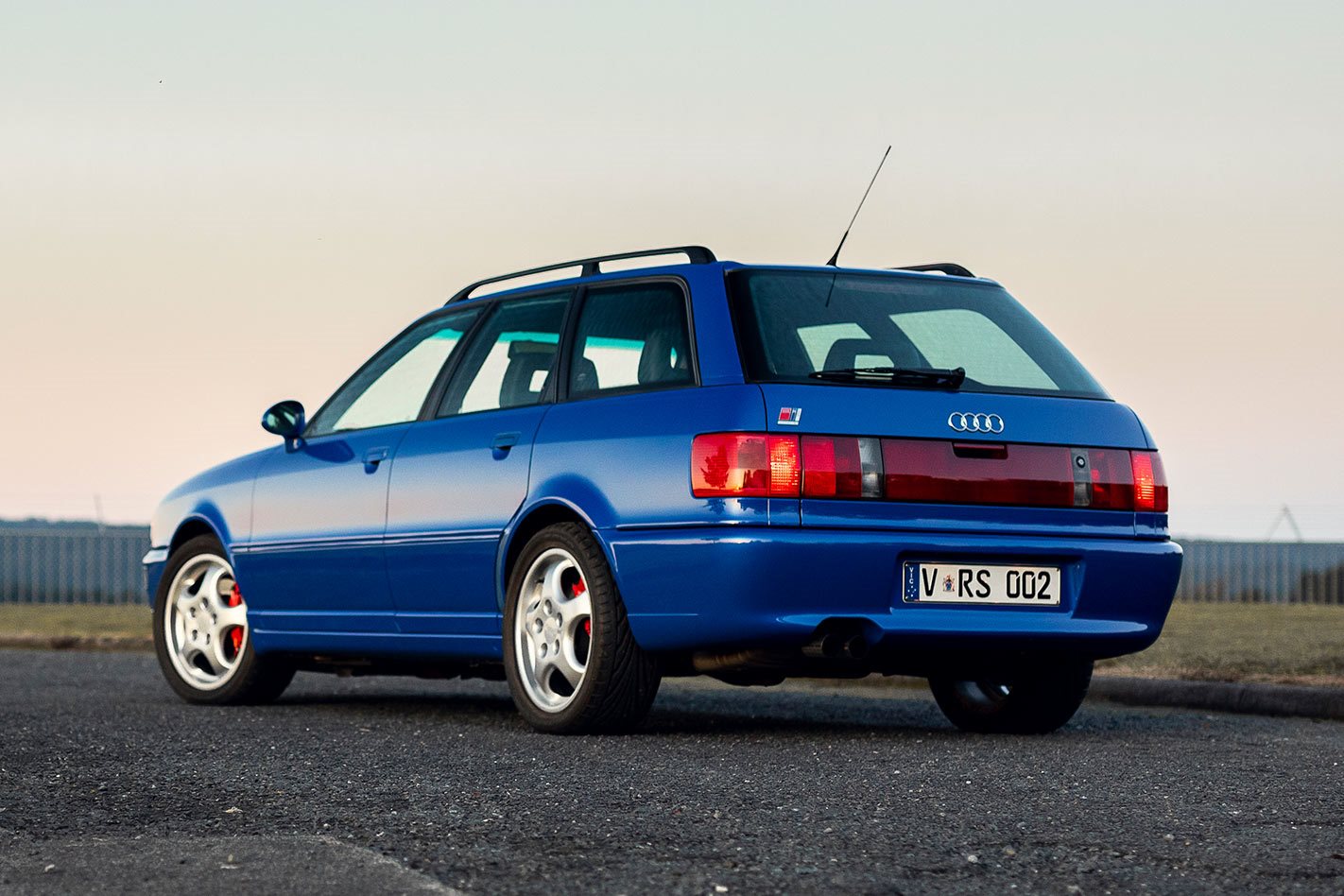The Quattro was a problem. In the early 90s, the ghost of the ur-Quattro haunted Audi.
Of course, Audi wasn’t alone in experiencing this problem. The E-Type legend gives Jaguar designers sleepless nights and Pagani still can’t lay the Zonda’s ghost to rest. Build a once-in-a-generation car and the follow-up is, by definition, going to be a disappointment.
That car was the S2 coupe. Mechanically fairly similar to the final ur-Quattro 20v but saddled with 120kg of extra pork, more feminine styling, softer suspension, lame Servotronic speed-sensitive power steering, and no meaningful competition pedigree to lean on, the S2 struggled. It was a car that Ingolstadt expected to continue the lineage, but almost immediately found itself outdated, out of its depth and plumb out of goodwill.
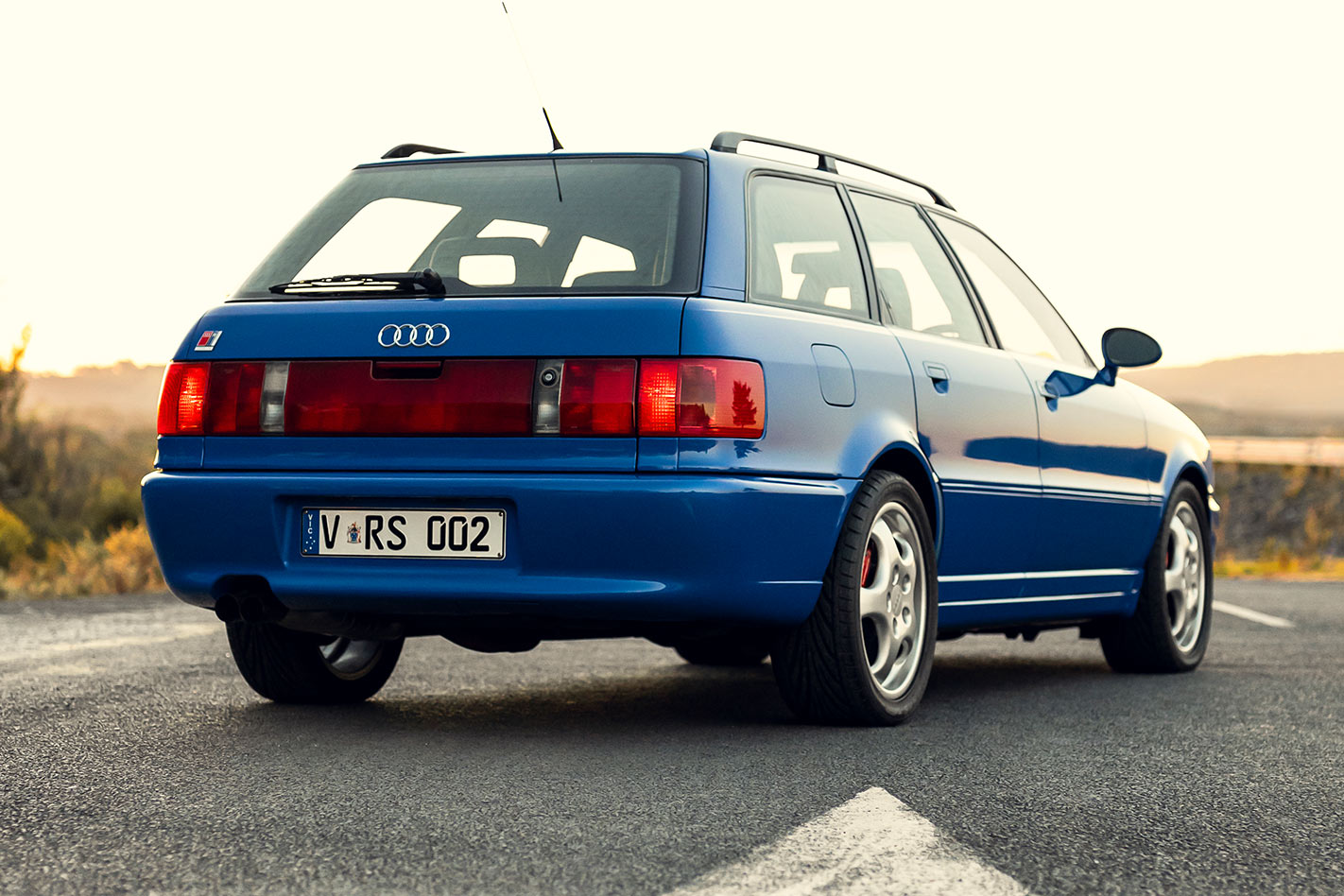
The year after Audi’s 162kW coupe launched, BMW introduced the lighter, quicker and more rewarding E36 M3 coupe. Audi had no answer to the 213kW BMW, despite heavily revising the S2 coupe and adding a wagon variant for 1993. The five-door was particularly interesting, especially when you looked beneath the rear end and realised that, largely for interior packaging reasons, Audi had ditched the old strut rear suspension and fitted it with a ‘proper’ double wishbone set-up.
What we didn’t know then was that Audi was laying the foundations for a car that would inherit the quattro mantle and set a template that’s still valid a quarter of a century later. The RS2 owes its genesis to Porsche’s 80s hypercar, the 959, built in what is effectively the company’s special ops centre: the Rössle-Bau plant at Zuffenhausen. After 959 production had ceased, the line at Rössle-Bau was used to inject some much-needed contract Deutschmarks into Porsche’s coffers. In 1986, Porsche stuffed a 928’s 4.7-litre V8 under the bonnet of a Mercedes-Benz G-Wagen for use as a Paris-Dakar support vehicle, paving the way for a partnership in 1990 with the W124 500E sedan, a 243kW hot-rod that zig-zagged across Stuttgart between the two companies’ body, paint and engine shops.
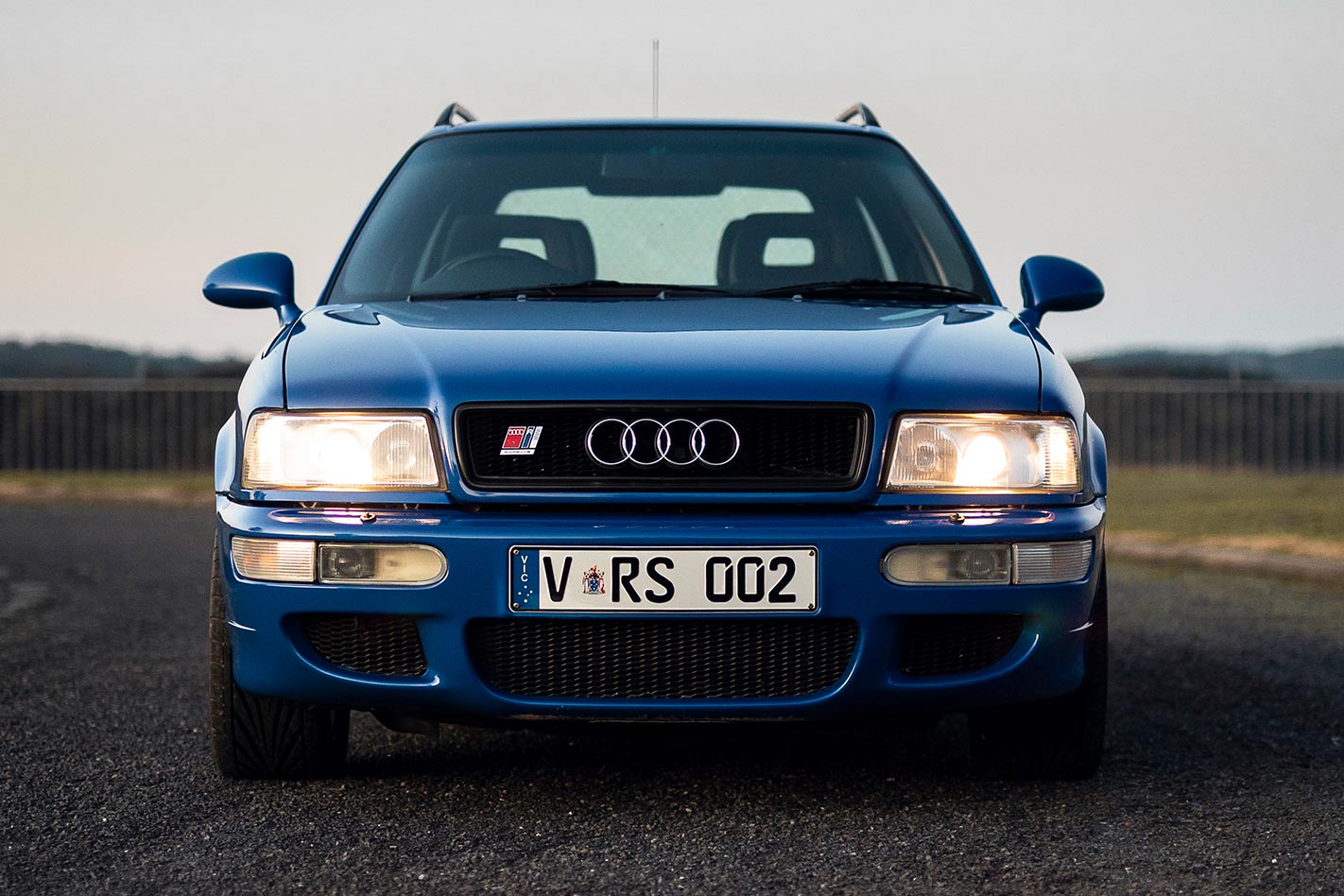
But by 1994, Porsche was in one heck of a hole. That year, the company sold 21,124 cars globally, a mere 7.5 percent of its 2019 production numbers. Its range consisted of the final iteration of the air-cooled 911 and the ageing 968, itself a facelift of the 944, which was introduced more than a decade earlier. Audi, by contrast, had its tail up. Ferdinand Piëch, the former head of Audi’s supervisory board, had transferred to the chairmanship of Volkswagen’s board the previous year and had left Audi in a transformational position.
Audi’s greatest ever product guru had set in place plans for a product offensive in 1994 with a trio of pivotal mainstream models aimed at lifting Audi upmarket: the all-aluminium Audi A8, the slick A4 and the revised A6. The grandson of the late Ferdinand Porsche also had another ace up his sleeve. As he was leaving his management suite in Ingolstadt, Porsche was overseeing the build of a very special five-cylinder engine at Audi’s Salzgitter plant, running each powerplant on a dyno at full load for 90 minutes to ensure it made the required power figures. Meanwhile, Audi was sending S2 wagon bodies-in-white to Rössle-Bau, finished with gearbox, suspension, driveshafts and trim parts. The result was finally revealed to an astonished global media at the 1994 Geneva Show.
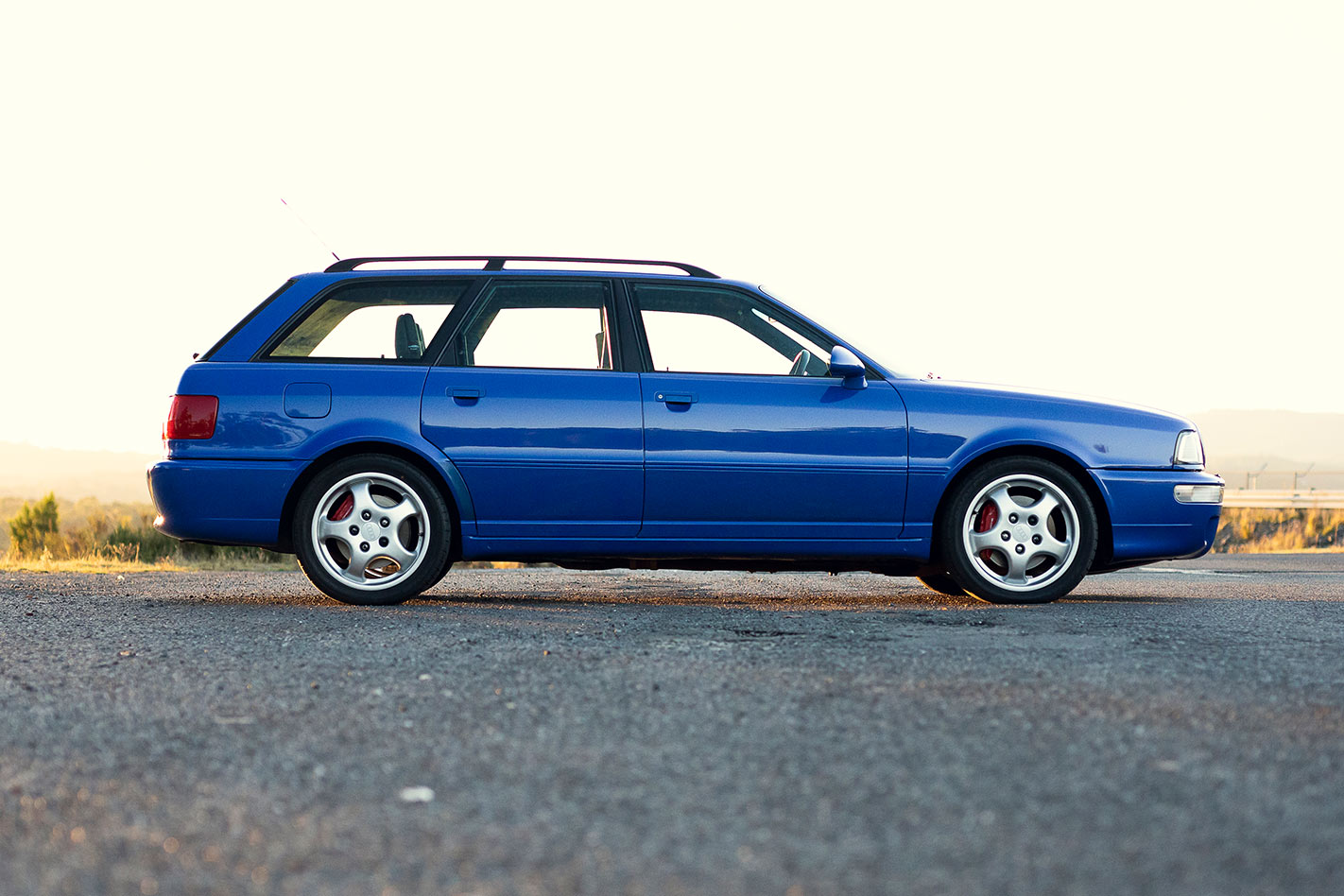
Nobody had ever seen anything quite like the RS2 Avant. The world’s fastest production wagon featured a 232kW version of the venerable 2.2-litre five-pot engine, augmented by a KKK turbocharger fully 30 percent larger than that fitted to the S2 wagon, running 1.4 bar of boost, with higher flow injectors and a hefty intercooler, a revised camshaft, a modified induction system and a low-pressure exhaust system. A revised Bosch URS4/URS6 engine management system helped the RS2 develop a chunky 410Nm at 3000rpm, and a better power-to-weight ratio than an E36 M3. A six-speed manual transmission directed drive to each corner, with a manually lockable differential on the rear axle. When timing gear was strapped on board, it was soon apparent that because of its phenomenal traction, the RS2 was quicker to 50km/h than a McLaren F1.
An agreement had been put in place to build this vehicle as a wagon rather than the more obvious coupe. Had Audi chosen to simply power up the S2 coupe, it would have been more powerful than any model on Porsche’s books in 1994. Embarrassing the 911 was clearly not in Porsche’s best interest. The RS2 was far from the first quick wagon from Audi, but it was markedly the most extreme to date. Ingolstadt’s formline included the lovely C3 200 quattro turbo of 1983 through to the fierce Euro-spec S4 Plus version of the C4-generation 100 that, in 1992, got the 206kW 4.2-litre V8.
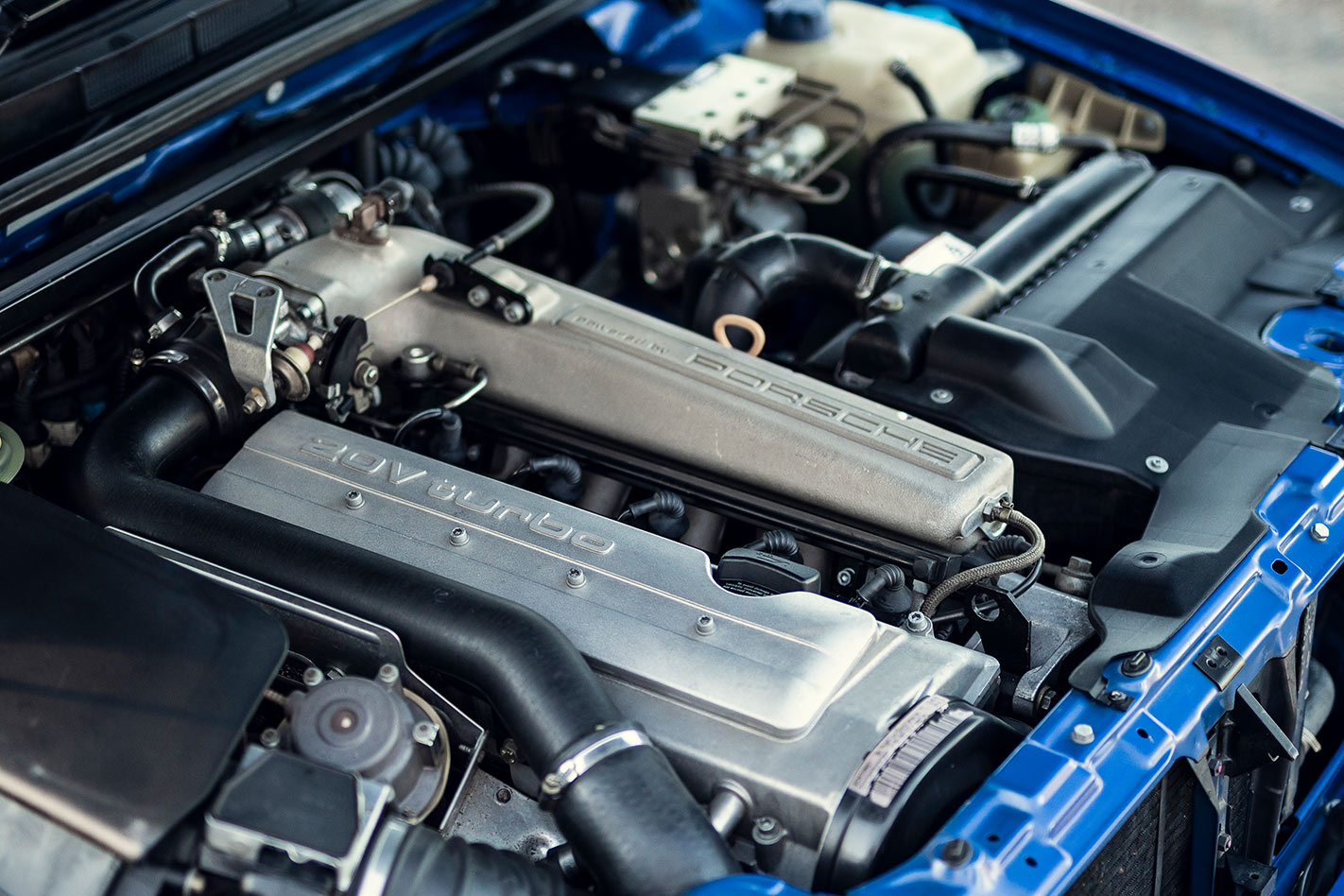
Peter Robinson was the first to file copy in Wheels with seat time in the RS2. In the December 1994 issue, Robbo sounded suitably impressed. “Beyond a 0-100km/h time of 5.4 seconds, the overtaking ability is astonishing,” he said. “Here at last is an Audi (apart from the Quattro) with steering communication. It has superb high-speed stability, near neutral handling with gentle understeer at the prodigiously high dry and wet weather limits of adhesion, clearly benefitting from the power split by the central Torsen differential.
“This tenacity makes the RS2 a relaxing quick cruiser. Even at 225km/h on a wet autobahn, it feels rock steady. Most surprising of all is the high standard of ride comfort. The taut suspension is never harsh, only the inevitable tyre rumble over coarse surfaces exposing 245/40ZR17 rubber that runs at quite high pressure.” His sign off? “Will enthusiasts pay $145,000 for a rebadged Audi 80 developed by Porsche? Too right.”
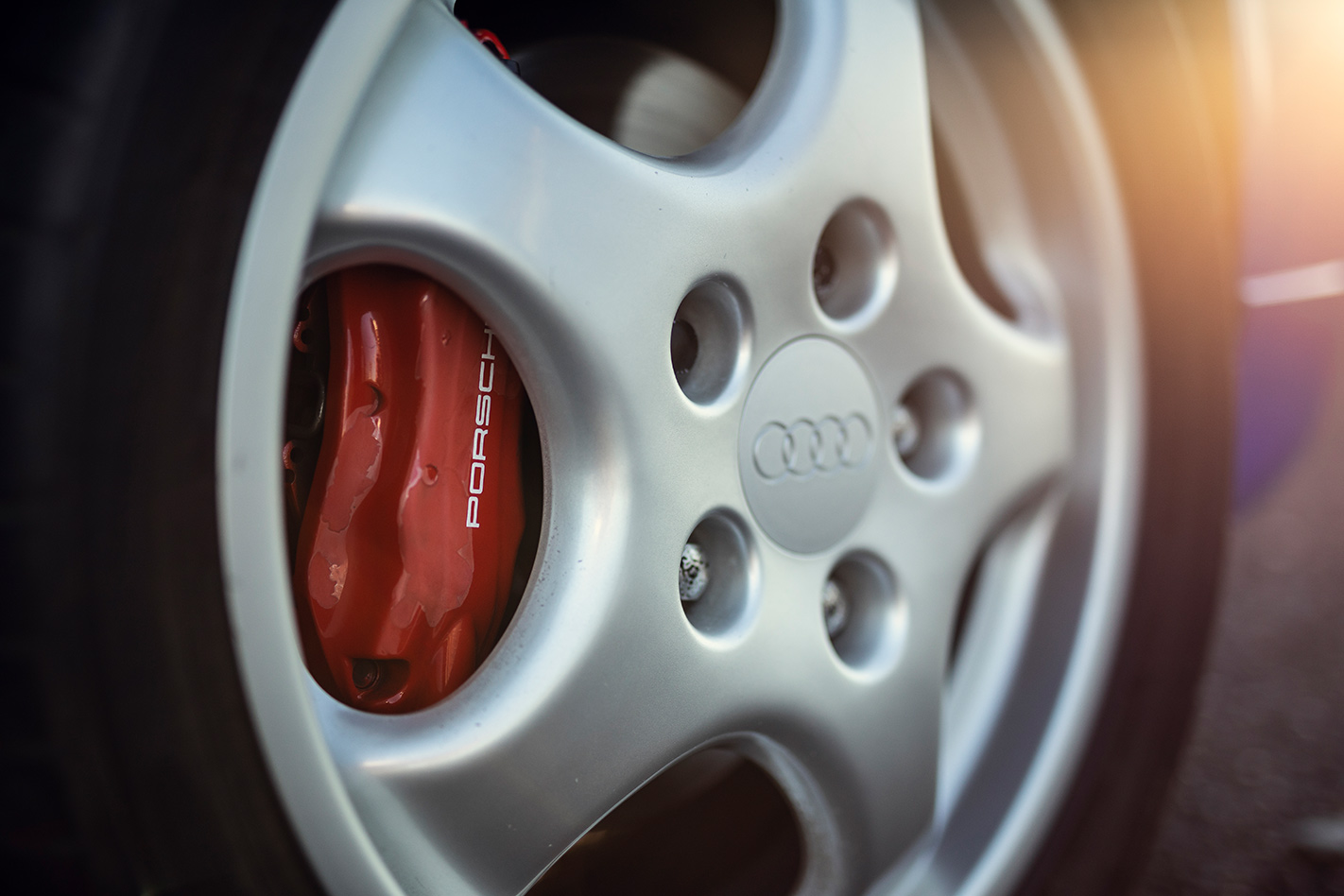
On that score, he was right in theory but off-beam in practice. The RS2 Avant was indeed a sales success for Audi, the original production run being oversubscribed and eventually extended, but the car never made it to Australia in any official capacity. Importer Inchcape had planned to bring 25 examples to this country but couldn’t make the numbers work on pricing versus demand. 182 right-hook examples went to the UK, with New Zealand and South Africa also accounting for a smattering.
It’s illuminating to drive an RS2 today, if only to see how vehicle development has progressed in the last 26 years. By today’s standards its body control feels languid, the steering a little slow and both clutch and gearshift long and deliberate in their actions. The boost threshold is far higher than in modern cars, but when the rev counter registers 3500rpm, the RS2 still has the power to shock. It’s astonishingly violent in its power delivery and the engine note is fantastically evocative. The RS2’s Torsen diff normally divides torque 75:25 front to rear but can reverse that ratio when required, marked by a thud from the rear axle. Yes, the old stager still has it.
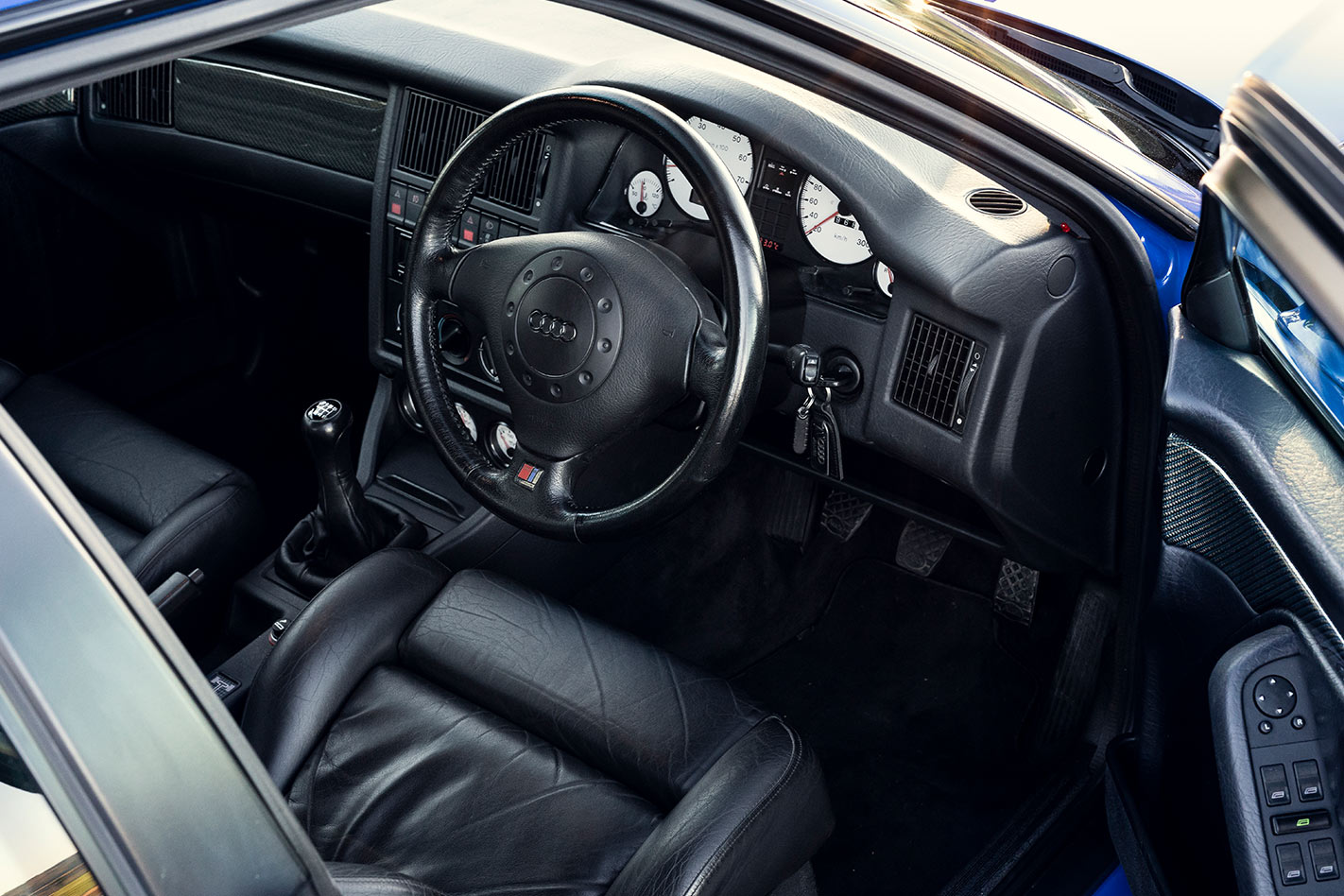
Walk round one and it’s easy to spot the Porsche parts. Audi was never coy about the relationship and you’ll spy the Porsche legend on the boot badge, on the steering wheel, on the Brembo brake calipers and the cam covers. The RS2 also features Porsche mirrors, front lamps, fuel pump and wheels although if you really want to don the anorak, you could point out that the wheels feature a marginally different internal diameter to the hole in the middle compared to the Porsche 993’s alloys.
Running an RS2 requires you to keep on top of a few things. The galvanised bodies largely look after themselves. As long as it isn’t modified or neglected the engines are as tough as old boots too, usually good for 400,000km before the head needs to be whipped off for an inspection. Do make sure the five-year/120,000km cambelt change has been performed as this is a fairly involved job that requires dismantling most of the front body panels. Coil packs are soldered to the loom, so converting the whole system to a more modern modular set-up is a popular modification. A full geo set-up is advised to ensure factory alignment and check the car over for panel fit, overspray and other accident damage.
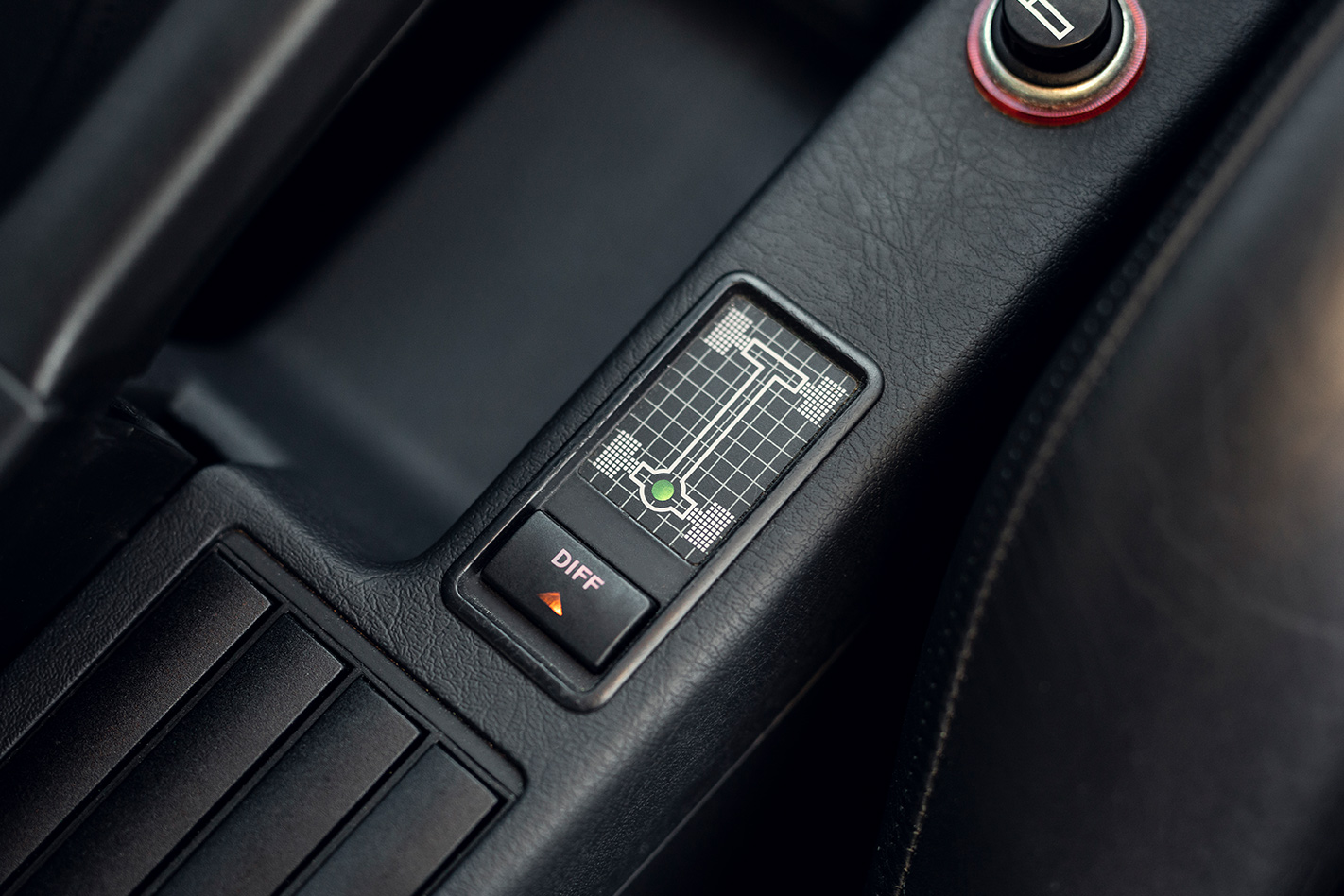
Gearboxes are probably the weak link in the transmission. You don’t want to hear a whirring noise at high revs in first gear. Finally, make sure that you’re looking at a genuine RS2. The VIN plate will be stamped with ARGE AUDI/PORSCHE RS2, and the VIN number starts with WAC. Since 2019, the RS2 has been eligible for import to the USA and values of left-hand drive cars have accelerated as a result. This has seen a consequent uplift in right-hooker prices, so don’t expect to find too much in the way of bargains. Buying in Australia is virtually impossible, but cars start from around £45,000 in the UK, which should see it landed in Australia from around $120k. Low-mileage mint examples are marching towards $200k.
The RS2 Avant was a car of its moment. It did more than any other to establish Audi’s uberwagon bona fides and was pivotal in going some way to exorcising the lingering ghost of the ur-Quattro. It also cemented Audi’s RennSport sub-brand as something to be taken seriously. Today it still blends practicality with an exotic piquancy just as effectively as it did when unleashed in 1994. Maybe more so with the benefit of hindsight. It’s a landmark Audi and the standout milestone in the chronology of the performance wagon. Small wonder it’s still so adored.
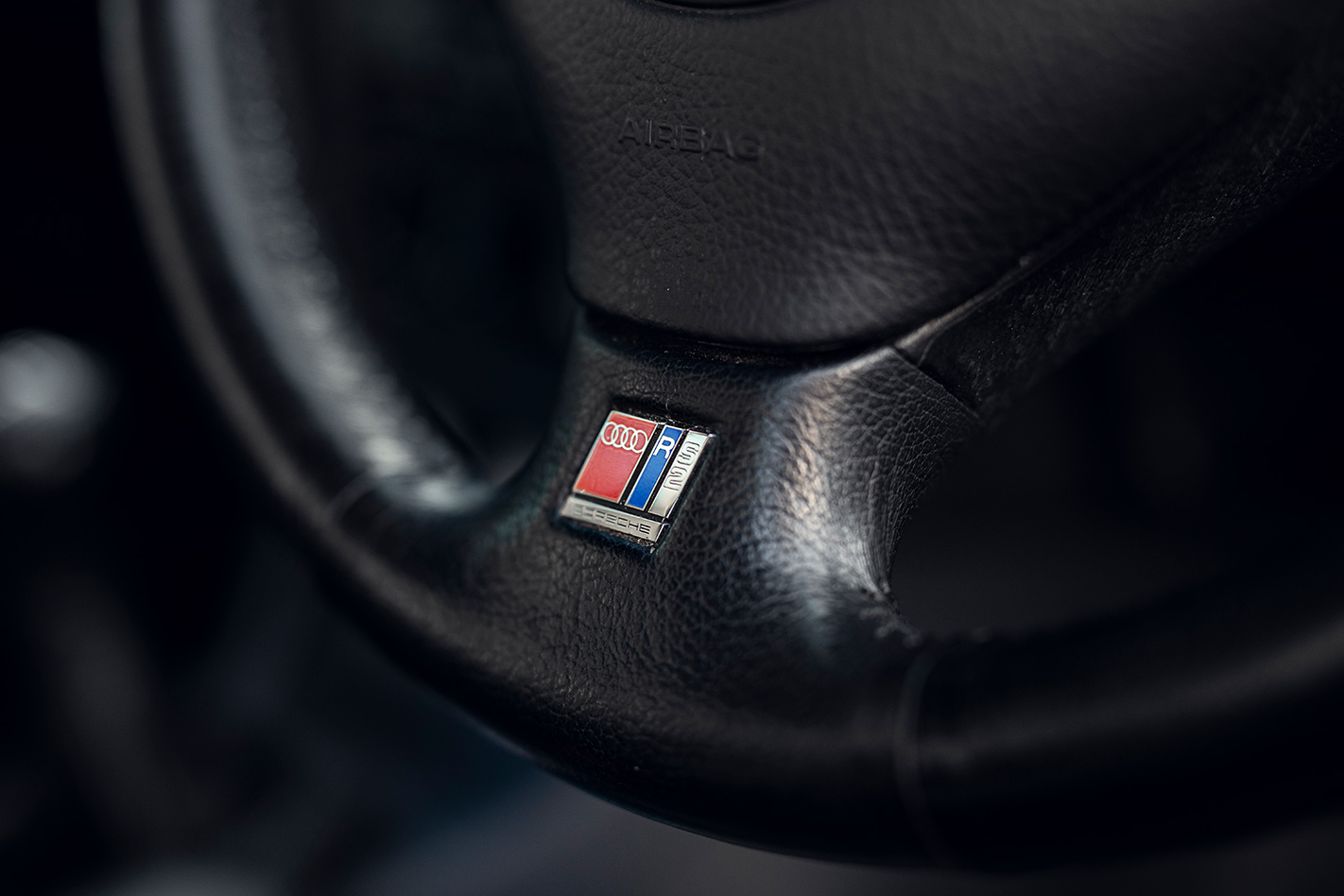
WHAT IS IT LIKE TO OWN?
“This car was delivered new to a guy in New Zealand and it was personally imported to Australia, but then the owner found it was too hard to import it back to NZ. I bought it in 2008. I’d had an S2 coupe and a B5 RS4, and I spotted this in a garage. I’d heard of one but never seen one and it was the only one anyone knew of in Australia at the time. I’ve got a thing for Audis. The B5 RS4 was my toy but as soon as I saw the RS2, I just knew that I wanted it. I’ve owned it since 2008 and in that time have only added around 6000 kilometres to the odo. She mainly sits in the garage.” – Ross Young, Melbourne, VIC
The good: Historical significance; turbo pace; quattro grip; mechanical toughness; practicality; respect from other car lovers; rarity in Australia; values are only going up over the longer term
The bad: Not exactly a buyer’s market; RS2-specific parts expensive and hard to source; old-school power delivery and body control; B7 RS4 Avant is cheaper and more capable
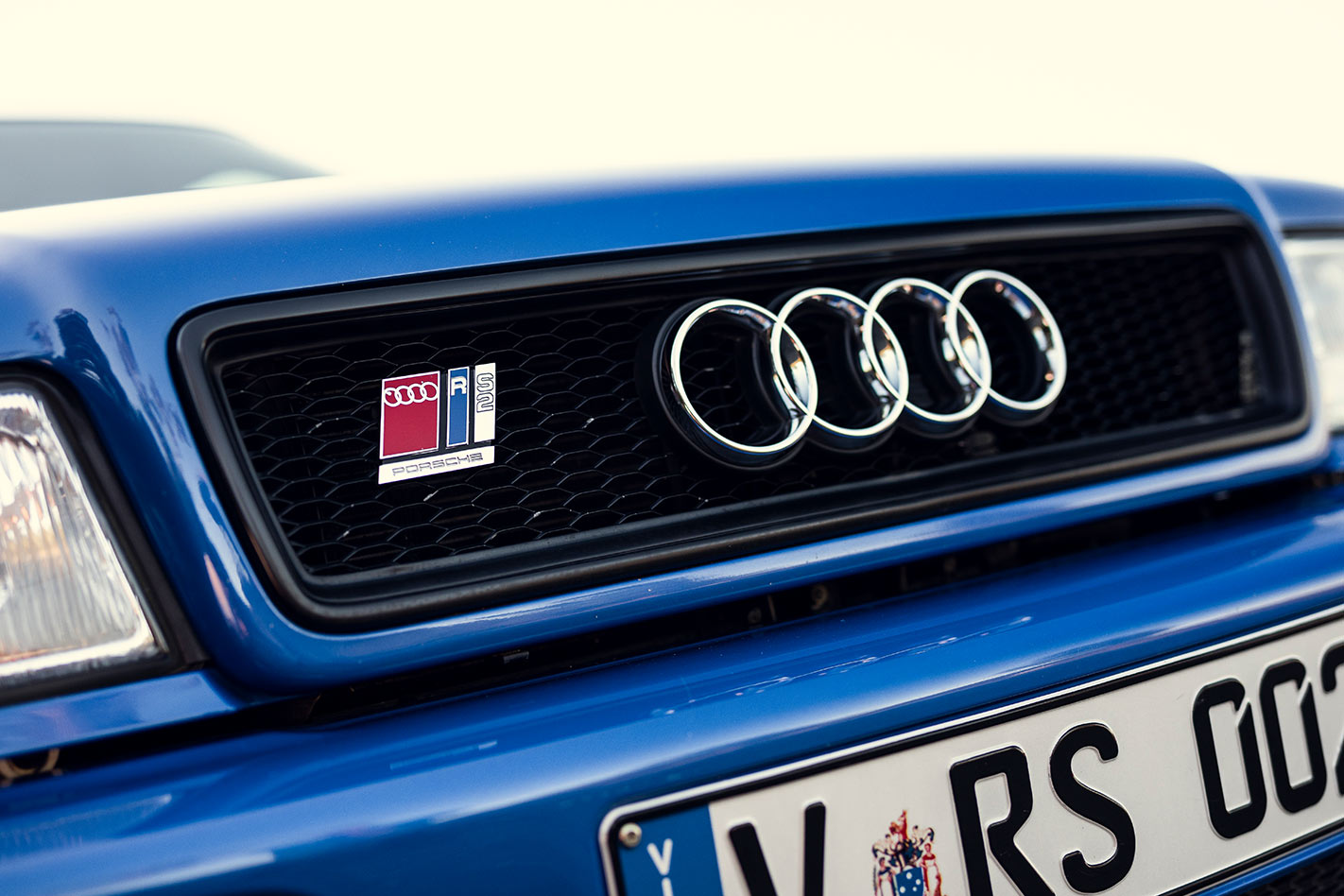
AUDI RS2 AVANT SPECS
Engine: 2226cc 5cyl, dohc, 20v, turbo Max power: 232kW @ 6500rpm Max torque: 410Nm @ 3000rpm Transmission: 6-speed manual Weight: 1595kg 0-100km/h: 5.4sec (claimed) Economy: 10.5L/100km Price: from $120,000 (value today)


